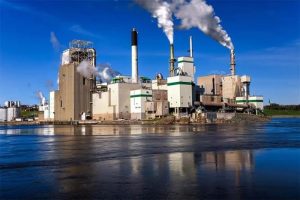Step into the world of industrial safety and risk management where knowledge is power, accidents are preventable, and workplace safety is the number one priority. Get ready for an engaging journey filled with essential information and practical tips!
Industrial safety and risk management are crucial aspects of any workplace, ensuring the well-being of employees and the smooth operation of businesses. By understanding the key concepts and best practices in this field, organizations can create a safe and secure environment for everyone.
Introduction to Industrial Safety and Risk Management
Industrial safety and risk management are crucial aspects of maintaining a safe and secure work environment in industrial settings. Industrial safety refers to the measures and practices put in place to ensure the well-being of workers, prevent accidents, and minimize risks in the workplace. On the other hand, risk management involves identifying, assessing, and controlling potential risks to prevent harm to individuals, property, and the environment.
Importance of Industrial Safety in the Workplace
Industrial safety is essential in the workplace as it helps to protect the health and safety of employees, reduce accidents and injuries, and create a productive work environment. By implementing proper safety measures, organizations can prevent costly downtime, avoid legal liabilities, and enhance their reputation among employees and customers.
Goals of Effective Risk Management in an Industrial Setting
Effective risk management in an industrial setting aims to identify and assess potential risks, prioritize them based on their likelihood and severity, and implement control measures to mitigate or eliminate these risks. The goals include reducing accidents, minimizing financial losses, ensuring compliance with regulations, and promoting a culture of safety within the organization.
Safety Regulations and Compliance
When it comes to industrial safety, adherence to key safety regulations is crucial to ensure the well-being of workers and the overall integrity of the workplace. Regulatory bodies play a significant role in establishing and enforcing these regulations, while non-compliance can lead to serious consequences.
Key Safety Regulations
- Occupational Safety and Health Administration (OSHA) regulations: OSHA sets and enforces standards to ensure safe and healthful working conditions for employees.
- Environmental Protection Agency (EPA) regulations: EPA regulations focus on protecting human health and the environment from potential hazards in industrial processes.
- National Fire Protection Association (NFPA) codes: NFPA codes provide guidelines for fire prevention and protection in industrial settings.
Role of Regulatory Bodies
- Establishing safety standards: Regulatory bodies set and update safety standards to address current industry risks and ensure compliance.
- Enforcement: Regulatory bodies conduct inspections, investigations, and audits to ensure that businesses are following safety regulations.
- Educating and training: Regulatory bodies provide resources, training, and guidance to help businesses understand and comply with safety regulations.
Consequences of Non-Compliance
- Fines and penalties: Non-compliance with safety regulations can result in significant fines and penalties for businesses, impacting their finances and reputation.
- Workplace accidents and injuries: Failure to comply with safety regulations increases the risk of workplace accidents and injuries, harming employees and productivity.
- Lawsuits and legal issues: Non-compliance can lead to lawsuits from injured employees or regulatory actions, resulting in legal consequences for businesses.
Hazard Identification and Risk Assessment
Identifying hazards and conducting risk assessments are crucial components of industrial safety to prevent accidents and ensure a safe work environment. Hazard identification involves recognizing potential sources of harm in the workplace, while risk assessment evaluates the likelihood and severity of these hazards causing harm.
Process of Identifying Hazards
- Regular inspections of the workplace to identify potential hazards such as slippery floors, faulty machinery, or exposed electrical wires.
- Reviewing incident reports and near-miss occurrences to pinpoint areas of concern.
- Consulting with employees who work directly with equipment or processes to gather insights on potential hazards.
Importance of Risk Assessment
Risk assessment is essential in preventing accidents as it allows organizations to:
- Proactively address potential risks before they escalate into accidents.
- Allocate resources effectively to control and mitigate identified risks.
- Ensure compliance with safety regulations and standards by implementing necessary safety measures.
Tools and Techniques for Risk Assessment
Some common tools and techniques used for risk assessment include:
- Hazard and Operability Study (HAZOP) for identifying hazards in processes.
- Fault Tree Analysis (FTA) to analyze potential causes of accidents.
- Bowtie Analysis to visualize and assess risks and preventive measures.
- Job Safety Analysis (JSA) to evaluate risks associated with specific job tasks.
Personal Protective Equipment (PPE)

Personal Protective Equipment (PPE) plays a crucial role in ensuring the safety of workers in industrial settings. It serves as a barrier against various hazards that can cause harm or injury. Proper PPE usage is essential to minimize the risk of accidents and protect employees from potential dangers.
Common Types of PPE used in industrial settings
- Safety helmets: Protects the head from falling objects or electrical hazards.
- Safety goggles: Shields the eyes from chemical splashes, debris, or other eye hazards.
- Hearing protection: Reduces exposure to loud noises that can cause hearing damage.
- Gloves: Prevents hand injuries from cuts, burns, chemicals, or other risks.
- Respirators: Filters out harmful particles or gases in the air to protect the respiratory system.
- Safety footwear: Guards against slips, trips, or injuries from heavy objects.
Importance of proper PPE usage
Wearing the appropriate PPE is crucial in safeguarding workers from potential dangers in the workplace. It helps reduce the risk of injuries, illnesses, and even fatalities. By using the right PPE for specific tasks or hazards, employees can work safely and confidently without compromising their well-being.
Role of employers in providing and enforcing the use of PPE
Employers have a responsibility to provide their workers with the necessary PPE and ensure its proper usage. This includes conducting risk assessments to identify hazards, selecting suitable PPE, and providing training on how to use and maintain the equipment correctly. Employers should also enforce strict policies and procedures to ensure that employees wear PPE at all times when required, fostering a culture of safety in the workplace.
Emergency Response and Preparedness
In any industrial setting, having an effective emergency response plan is crucial to ensuring the safety of everyone involved. This plan Artikels the necessary steps to be taken in the event of an emergency to minimize risks and protect lives.Regular emergency drills and training are essential to ensure that all employees are familiar with the emergency response plan and know how to act quickly and efficiently in a crisis.
These drills help to identify any gaps in the plan and provide an opportunity for employees to practice their response in a controlled environment.
Components of an Effective Emergency Response Plan
An effective emergency response plan should include the following components:
- Clear communication procedures to alert all employees of the emergency
- Designated evacuation routes and assembly points
- Assigning roles and responsibilities to specific individuals during an emergency
- Procedures for accounting for all employees after evacuation
- Access to emergency equipment such as fire extinguishers and first aid kits
Importance of Regular Emergency Drills and Training
Regular emergency drills and training sessions are important because they:
- Help employees become familiar with the emergency response plan
- Identify any weaknesses or gaps in the plan that need to be addressed
- Ensure that employees can act quickly and efficiently in a crisis
- Build confidence and reduce panic during real emergencies
Common Industrial Emergencies and How to Respond
Some common industrial emergencies include:
- Fire: Activate the fire alarm, evacuate the building using designated routes, and use fire extinguishers if safe to do so.
- Chemical Spills: Evacuate the area, contain the spill if possible, and follow proper decontamination procedures.
- Medical Emergency: Call emergency services, administer first aid if trained to do so, and ensure the affected individual receives prompt medical attention.
- Natural Disasters: Follow the designated procedures for each type of natural disaster (e.g., earthquake, tornado, flood) and seek shelter in a safe location.
Industrial Hygiene
Industrial hygiene is the science of anticipating, recognizing, evaluating, and controlling workplace conditions that may cause illness or injury to workers. It plays a crucial role in ensuring the health and safety of employees in industrial settings by identifying and mitigating potential hazards.
Common Workplace Hazards Related to Industrial Hygiene
- Poor air quality: Exposure to pollutants, dust, fumes, and other airborne contaminants can lead to respiratory issues and other health problems.
- Noise pollution: Prolonged exposure to high levels of noise can cause hearing loss and other auditory problems.
- Chemical exposure: Contact with hazardous chemicals can result in skin irritation, respiratory issues, and other serious health effects.
- Ergonomic hazards: Poor posture, repetitive movements, and improper lifting techniques can lead to musculoskeletal disorders.
Role of Ventilation Systems in Maintaining a Safe Working Environment
Ventilation systems play a critical role in industrial hygiene by ensuring that the air quality in the workplace is safe for employees. These systems help remove airborne contaminants, control temperature and humidity levels, and provide fresh air circulation. Proper ventilation not only protects workers from harmful substances but also helps maintain a comfortable and productive work environment.
Role of Employees in Safety
Employees play a crucial role in maintaining industrial safety within an organization. It is important for every employee to actively participate in creating a safe work environment to prevent accidents and injuries.
Responsibilities of Employees
- Follow safety protocols and procedures set by the organization.
- Report any unsafe conditions or hazards immediately to the appropriate personnel.
- Participate in safety training programs to enhance awareness and knowledge.
- Use personal protective equipment (PPE) correctly and consistently.
Importance of Safety Culture
Safety culture refers to the shared values, beliefs, and attitudes towards safety within an organization. A strong safety culture fosters a proactive approach towards safety, leading to fewer accidents and a more productive work environment.
Contributions to a Safer Work Environment
- Engage in safety committees or meetings to provide input on safety matters.
- Encourage and support fellow employees in following safety protocols.
- Participate in safety audits and inspections to identify and address potential risks.
- Promote a safety-conscious mindset by leading by example and prioritizing safety in all tasks.
INDUSTRIAL GOODS AND SERVICES

Industrial goods and services play a vital role in ensuring workplace safety by providing essential equipment, tools, and materials needed for various industrial operations. Choosing the right suppliers for these goods and services is crucial to maintain a safe and efficient work environment.
Range of Industrial Goods and Services
Industrial goods and services encompass a wide range of products and solutions tailored to meet the specific needs of different industries. This includes safety equipment such as helmets, gloves, goggles, and harnesses, as well as machinery, tools, and materials used in manufacturing, construction, and other industrial processes. Additionally, services like training programs, maintenance support, and safety consultancy are also essential for ensuring workplace safety.
Contribution to Workplace Safety
Industrial goods and services contribute to workplace safety by providing employees with the necessary tools and equipment to perform their tasks safely and efficiently. Safety equipment helps protect workers from potential hazards, while machinery and tools designed with safety features help prevent accidents and injuries. Furthermore, services such as training programs and safety audits help educate employees on best practices and ensure compliance with safety regulations.
Choosing the Right Suppliers
Choosing the right suppliers for industrial goods and services is crucial for maintaining quality, reliability, and compliance with safety standards. Suppliers with a reputation for delivering high-quality products and reliable services are essential to ensure the safety and well-being of employees. It is important to conduct thorough research, evaluate supplier credentials, and establish clear communication channels to ensure a successful partnership that prioritizes workplace safety.
Epilogue
As we wrap up our discussion on industrial safety and risk management, remember that prioritizing safety is not just a regulatory requirement but a moral responsibility. By implementing effective safety measures, organizations can protect their most valuable assets – their employees.
Quick FAQs
What is the role of employees in maintaining industrial safety?
Employees play a crucial role in maintaining industrial safety by following safety protocols, reporting hazards, and actively participating in safety programs.
How do industrial goods and services contribute to workplace safety?
Industrial goods and services such as safety equipment and training programs enhance workplace safety by providing necessary tools and resources to prevent accidents and injuries.
Why is it important to choose the right suppliers for industrial goods and services?
Choosing the right suppliers ensures that organizations receive high-quality products and services that meet safety standards, ultimately contributing to a safer work environment.




